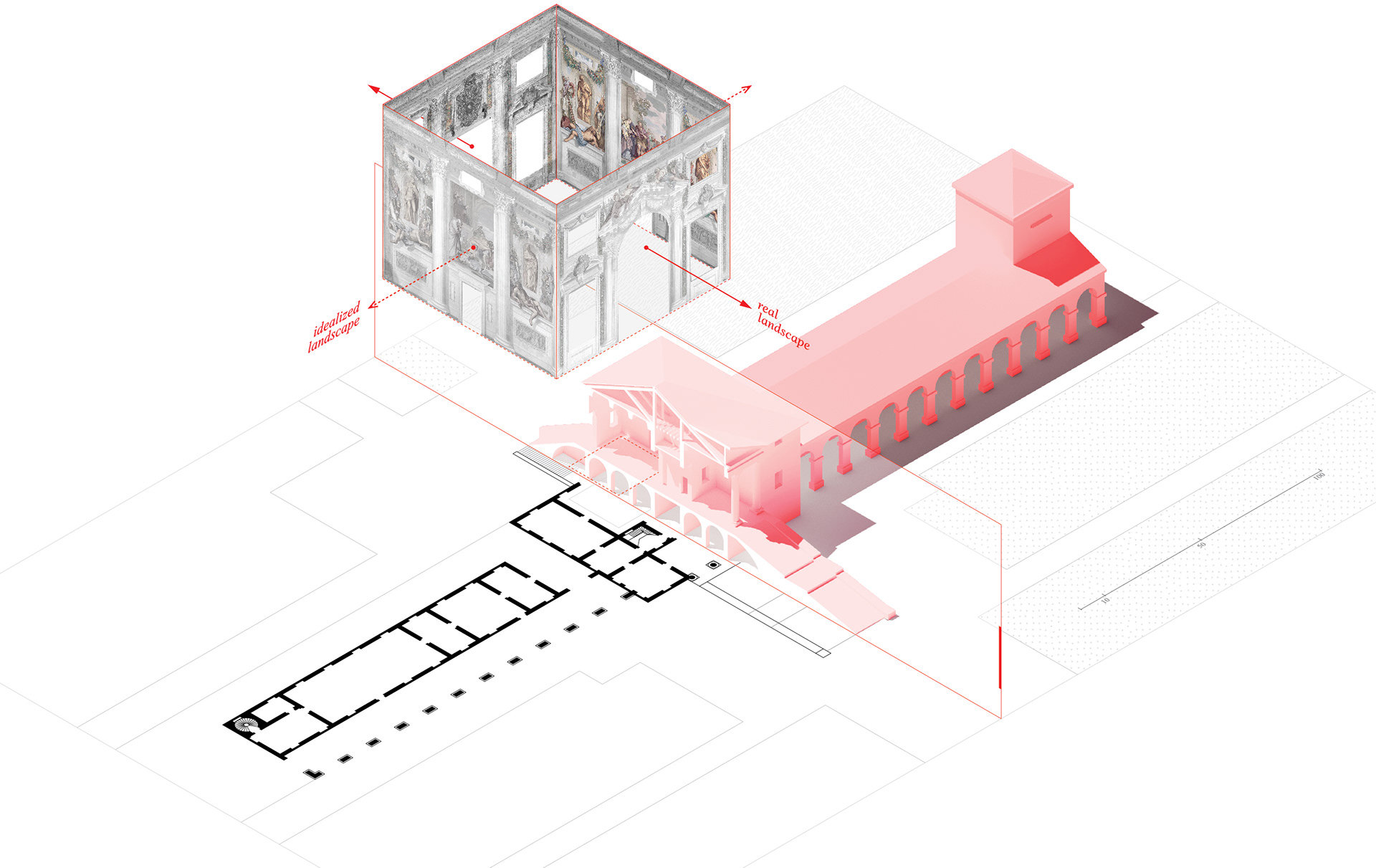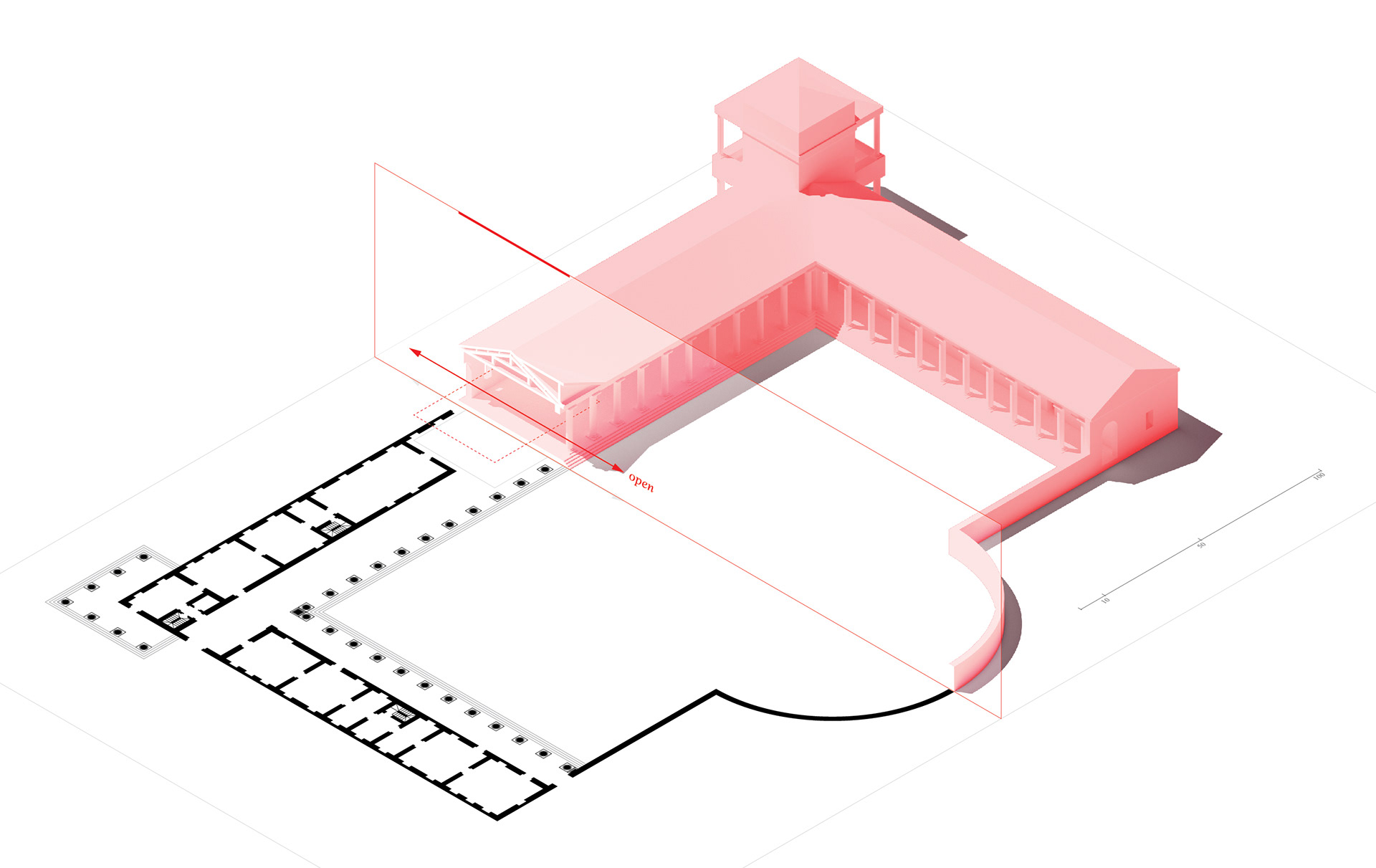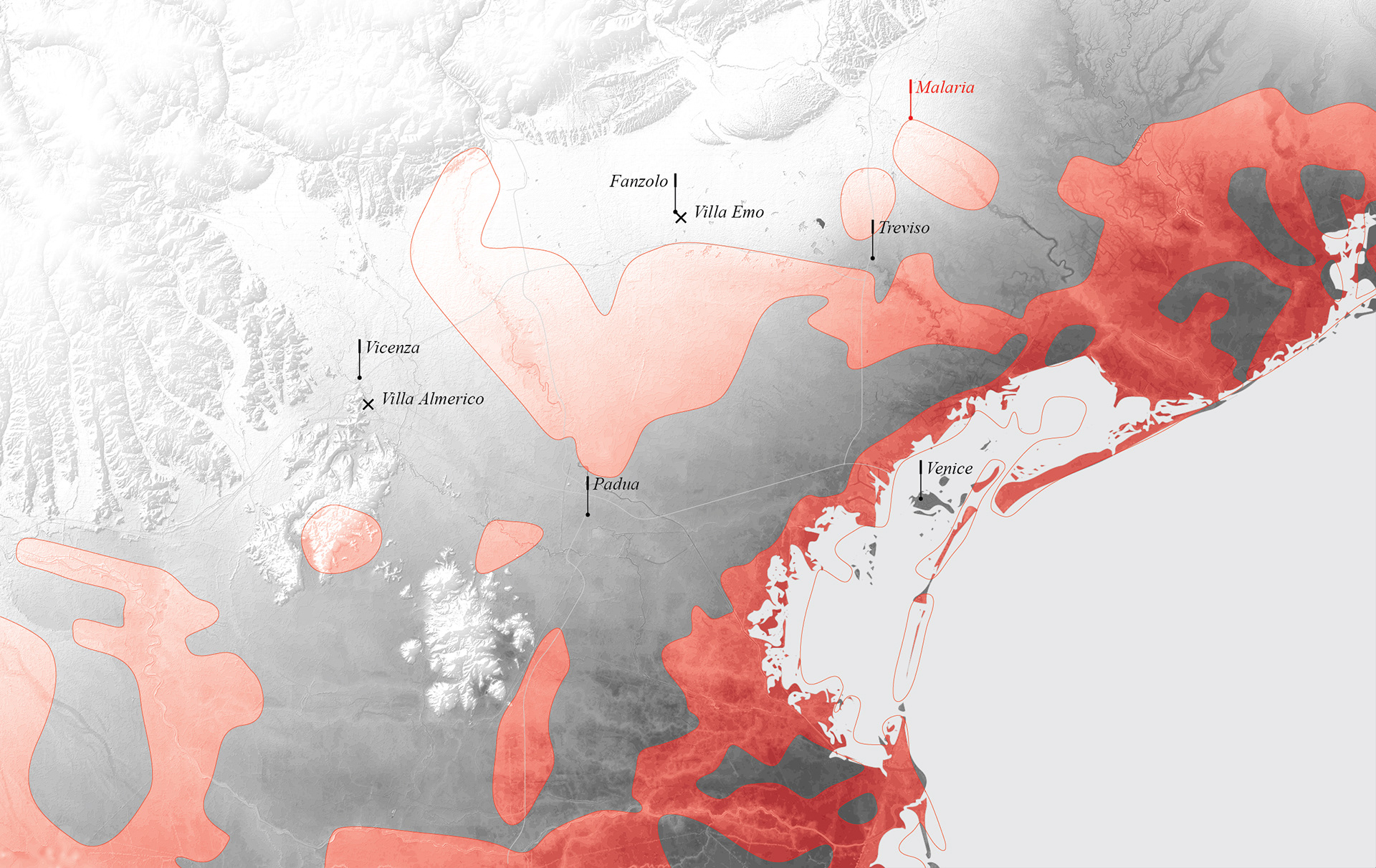Bad Air
Venetian elite of the sixteenth century invested their wealth in villas on the mainland terraferma. A villa is an agricultural unit that combines architecture, landscape, and gardens. Their construction had a significant impact on the environment of the terraferma, converting unproductive and unhealthy sites into profitable and pleasurable retreats. The Venetian architect Andrea Palladio (1508-1580) remains well known for his villa designs, popularized through his 1570 book Quattro Libri dell’Architettura (Four Books of Architecture). Through historical analysis and spatial critique, this research explores Palladio’s strategies to construct a healthy environment and benefit the landowners’ health at the Villa Emo and Villa Almerica. However, by looking at the same villas through a lens of atmospheric inequality, I reveal that a state of health was available to the elite in part by denying others the same opportunity. On the terraferma in the sixteenth century, by controlling water, air, and land, a Venetian’s ability to be healthy was secured by dispossessing others of the same right. This research shows that access to health raises questions of spatial justice. Furthermore, gains for one segment of the population must consider the consequences to others. While this project focuses on two well-known villas that exemplify design techniques used repeatedly by Palladio, there is a further opportunity to analyze structural inequalities in Palladio’s other works and in works that follow the model he developed.




Publication
Towards a Landscape of Equality: Design of the Palladian Villa to Control Access to Health
Landscape Architecture 28(10): 107-119.